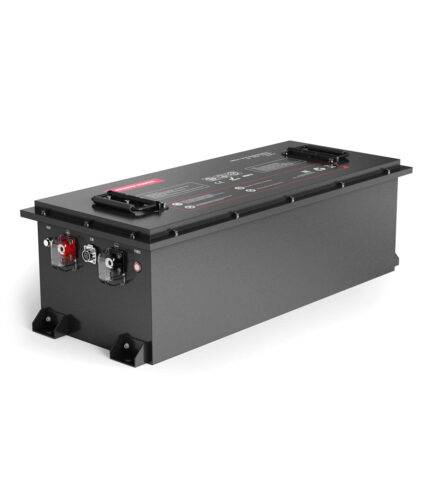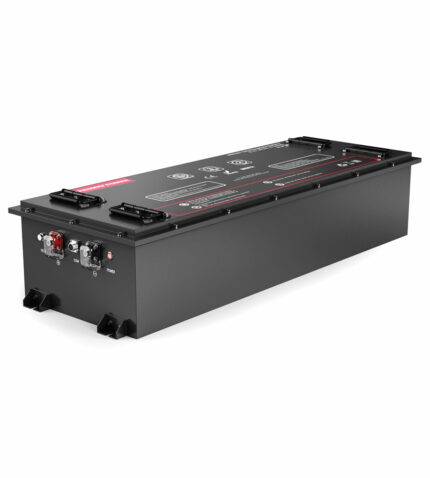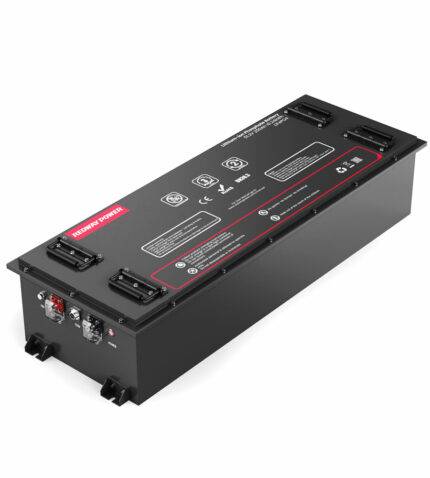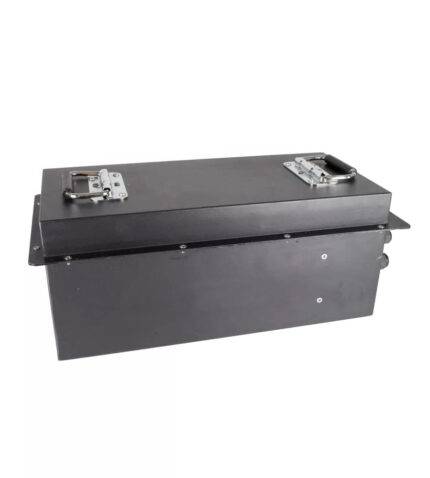72V Lithium Battery
- All products
- 96V Lithium Battery1 product
Best-OEM12 products
- 12V Lithium Battery18 products
- 24V Lithium Battery14 products
- 36V Lithium Battery6 products
- 48V Lithium Battery20 products
- 60V Lithium Battery8 products
- 72V Lithium Battery4 products
- PowerWall8 products
- Home ESS3 products
- eBike Lithium Battery1 product
- Lithium Battery Module19 products
- 217005 products
Redway Power is a distinguished manufacturer wholesaler, specializing in premium 72V LiFePO4 lithium batteries. Renowned for reliability and performance, their batteries meet diverse industrial demands. With a focus on wholesale distribution, Redway Power provides efficient and sustainable power storage solutions, ensuring customer satisfaction and industry-leading standards.
72V Lithium Battery FAQs
Understanding “OEM” on a 72V LiFePO4 battery is crucial. OEM stands for Original Equipment Manufacturer. It denotes that the battery comes from the device’s original maker, ensuring compatibility. LiFePO4 batteries offer safety, durability, and high energy density, surpassing lead-acid batteries in performance. Thus, “OEM” guarantees quality and fit.
Here’s a simplified explanation:
OEM Definition:
- OEM stands for Original Equipment Manufacturer.
- It means the battery is made by the same company that produced the device or equipment.
LiFePO4 Battery Benefits:
- LiFePO4 batteries are safe, durable, and offer high energy density.
- They outperform lead-acid batteries in power, weight, and temperature resilience.
In short, “OEM” ensures the battery is an official replacement from the original manufacturer, guaranteeing compatibility and quality.
“OEM” in a 72V battery context means Original Equipment Manufacturer. OEM batteries are from the equipment’s maker, designed to fit its specifications. The “original” battery is the one that came with the equipment, which may or may not be OEM. OEM replacements aim to match the original closely, but verify compatibility and quality.
Here’s the breakdown:
OEM Battery:
- Comes from the equipment’s manufacturer.
- Specifically made to meet the equipment’s specs.
Original Battery:
- The one that came with the equipment.
- Might or might not be OEM.
Differences:
- If not OEM, slight differences are possible.
- Goal is to match performance closely.
An OEM 72V battery aims to be like the original, but check compatibility and quality.
The lifespan of a 72V lithium battery depends on its chemistry, usage patterns, and maintenance. Typically, LiFePO4 batteries last around 2000 to 3000 charge-discharge cycles. For optimal longevity, avoid fully discharging the battery and maintain it within the recommended temperature range. LiFePO4 batteries generally last about 5.5 years with daily use, but actual lifespan may vary. Regular monitoring and care are essential for maximizing battery lifespan.
Let’s simplify:
Battery Chemistry and Lifespan:
- Lithium batteries, especially LiFePO4, are known for their durability.
- On average, a well-maintained LiFePO4 battery can endure around 2000 to 3000 charge-discharge cycles, lasting approximately 5.5 years with daily use.
Usage Patterns and Maintenance:
- How you use and care for the battery also influences its longevity.
- Avoid fully draining the battery and keep it within the recommended temperature range for optimal performance.
Realistic Expectations:
- While the estimated lifespan provides a guideline, actual durability may vary based on individual usage and environmental factors.
- Regular monitoring and proper maintenance are key to maximizing the battery’s lifespan and performance.
Determining the solar panels needed for a 200Ah battery involves considering battery type and charge controller efficiency. For a lead acid battery, approximately 350 watts of solar panels are required, while for a lithium (LiFePO4) battery, around 600 watts are needed. These calculations assume ideal conditions and can vary based on setup and location. Adjust panel size accordingly for accurate charging.
Let’s simplify:
For Lead Acid Batteries:
- With a 12V, 200Ah lead acid battery, about 350 watts of solar panels are needed.
- This calculation assumes 5 peak sun hours and a PWM charge controller.
For Lithium (LiFePO4) Batteries:
- For the same 200Ah capacity but with LiFePO4 chemistry, approximately 600 watts of solar panels are required.
- Again, this considers 5 peak sun hours and a PWM charge controller.
These figures provide a rough estimate; actual needs may vary based on conditions. Adjust panel size as needed for optimal charging.
To maximize LiFePO4 battery life, avoid extreme temperatures, charge partially, use a reliable BMS, prevent overcharging, store at 50% charge, limit deep discharges, charge and discharge moderately, choose quality batteries, perform regular maintenance, and follow manufacturer guidelines. These simple steps ensure optimal performance and longevity.
Here are some straightforward tips to help you achieve that:
Temperature Control: Avoid exposing your battery to extreme temperatures, as both hot and cold conditions can harm its performance and longevity.
Partial Charging: Instead of waiting until your battery is completely drained, try to charge it partially. This means topping it up when it’s around 20-30% empty, rather than letting it reach 0%.
Use a Reliable BMS: A Battery Management System (BMS) acts as a guardian for your battery, ensuring it’s charged and discharged safely and efficiently.
Prevent Overcharging: Be mindful not to leave your battery charging for too long. Once it’s fully charged, unplug it to avoid overcharging, which can degrade its lifespan.
Optimal Storage: If you’re not using your battery for a while, store it at around 50% charge. This helps maintain its health during periods of inactivity.
Avoid Deep Discharges: Try to avoid letting your battery drain completely, as this can put unnecessary stress on its cells and reduce its lifespan.
By following these simple steps, you can ensure your LiFePO4 battery performs optimally for as long as possible, giving you more bang for your buck.
The maximum charge voltage for a 72V LiFePO4 battery is around 87.6V, calculated from individual cell voltages of 3.65V each. Safety is vital, so always follow manufacturer guidelines and use a reliable battery management system. Each battery pack may vary slightly, so consult the manufacturer’s specifications for precise charging details.
Here’s a breakdown:
Calculation: A 72V LiFePO4 battery typically consists of multiple cells connected in series. Each cell has a nominal voltage of 3.2V. Therefore, for a 72V pack, you would have 24 series-connected cells (24 × 3.2V = 76.8V).
Maximum Charge Voltage: The maximum charge voltage for LiFePO4 cells is usually around 3.65V per cell. So, for our 72V pack, the total maximum charge voltage would be approximately 24 × 3.65V = 87.6V.
Safety Precautions: It’s crucial to adhere to safety guidelines and use a reliable battery management system (BMS) to prevent overcharging. Always refer to the manufacturer’s specifications for accurate charging parameters.
In summary, knowing the maximum charge voltage ensures safe and effective operation of LiFePO4 batteries for various applications.
Fully discharging a 72V LiFePO4 battery offers benefits like capacity testing and cell balancing but poses risks such as shortened lifespan, voltage drop, and safety concerns. It’s advisable to avoid deep discharges, maintain a minimum discharge level, utilize Battery Management Systems, and adhere to manufacturer guidelines for optimal battery care and longevity.
Let’s break them down:
Pros of Full Discharge:
- Testing Capacity: It’s like checking a car’s fuel tank to see how much gas it holds. This helps ensure the battery works as expected.
- Balancing Cells: Think of it as making sure all the tires on a car have the same amount of air. This keeps the battery’s performance consistent.
Cons of Full Discharge:
- Shortened Lifespan: Imagine a toy getting worn out from too much use. Similarly, frequent full discharges can wear out the battery faster.
- Voltage Drop: When a battery gets used up, it’s like a flashlight getting dimmer. If it gets too dim, it might not work anymore.
- Safety Risks: Just like driving a car until it runs out of gas is risky, fully draining the battery can harm it permanently.
Recommendations:
- Avoid Deep Discharges: It’s best to keep some ‘fuel’ in the battery to make it last longer.
- Use BMS: Think of this as having a smart guardian for your battery that keeps it safe from harm.
- Follow Manufacturer Guidelines: Just like following a recipe for baking a cake, sticking to the instructions ensures the battery stays healthy.
In summary, while fully discharging can help understand the battery’s capacity and keep it balanced, it’s essential to avoid doing it often to prevent damage and ensure a longer lifespan.
Charging a 72V LiFePO4 battery to 100% can affect its lifespan and stability. While it’s generally safe, stopping at around 80% or 90% can prolong the battery’s life. Consider your specific needs: for high energy demands like electric vehicles, full charge may be necessary, but for long-term use like solar energy, partial charging is better. Periodic balancing is also important. Always follow manufacturer guidelines.
Longevity Impact: Charging to full capacity can reduce the battery’s overall lifespan. Studies show that LiFePO4 batteries tend to last longer when charged to around 80% or 90% instead of 100%.
Stability Concerns: Fully charging can stress the battery cells, potentially leading to overcharging and damage. Maintaining a lower charge level helps ensure voltage stability and prevents issues like thermal runaway.
Application Specifics: The choice between full and partial charging depends on the battery’s intended use. For applications with high energy demands like electric vehicles, full charge may be necessary. However, for long-term usage like solar energy storage, partial charging is preferable for better performance over time.
Balancing Importance: Periodic balancing of the battery is crucial, especially if consistently charged to 100%. Balancing ensures that all cells have similar voltages, optimizing overall battery health and performance.
In conclusion, while charging a 72V LiFePO4 battery to 100% is generally safe, considering factors like longevity, stability, and application specifics is essential for maximizing performance and lifespan. Always adhere to manufacturer guidelines for optimal battery care and maintenance.






